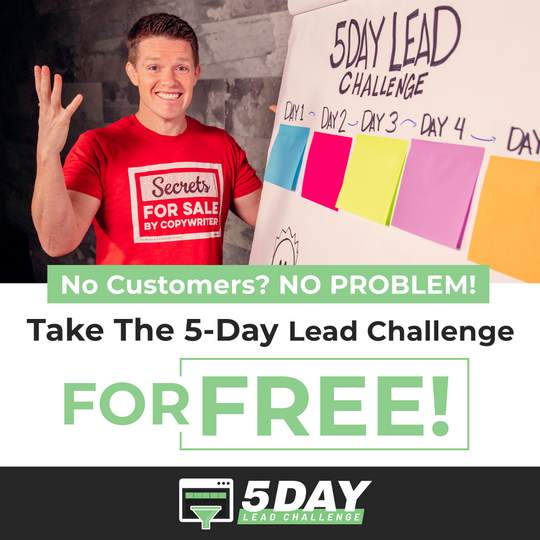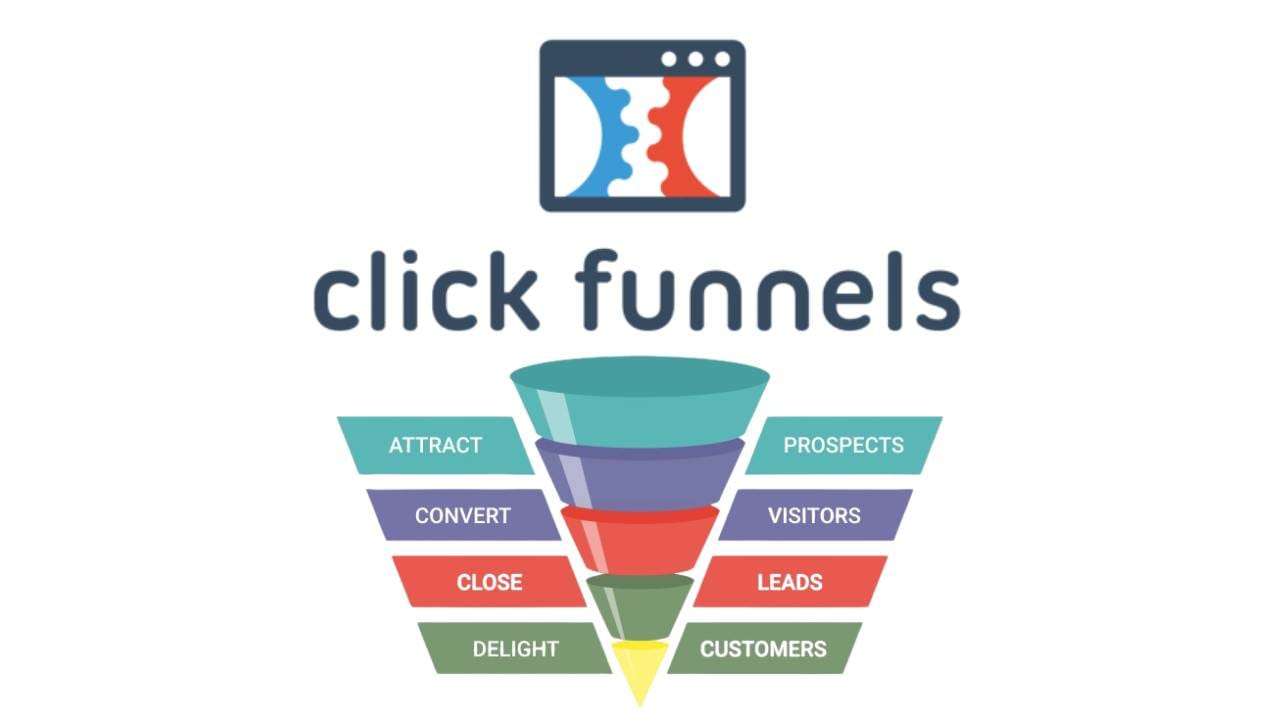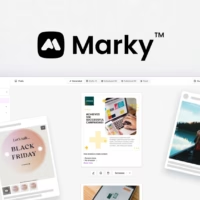What are ClickFunnels? Unlock this tool to guide leads effortlessly through each stage, increasing conversions with minimal effort.
Table of Contents
What Are ClickFunnels: Turbocharge Your Conversions
Introduction
In today’s digital landscape, businesses rely heavily on online marketing strategies to increase visibility, capture leads, and drive sales. Yet, it can be challenging to move prospects through the sales process efficiently. Traditional websites often fall short in guiding visitors toward a specific goal, leaving potential customers uncertain about what to do next. This is where sales funnels come into play—systems designed to lead prospects from initial interest to final purchase.
Among the tools available to build these funnels, ClickFunnels stands out as a prominent and comprehensive platform. If you have ever wondered, “What are ClickFunnels and how do they work?” this guide aims to answer that question in detail. From understanding the basic concept to exploring key features and use cases, this post will help you gain a thorough understanding of ClickFunnels and its role in modern digital marketing.
What Are ClickFunnels: A Clear Definition
When people ask, “what are clickfunnels,” they are typically referring to a specialized online platform that allows users to build and optimize sales funnels without needing advanced technical skills. Launched in 2014, ClickFunnels is a web-based software solution designed to simplify the process of creating landing pages, order forms, membership sites, and a sequence of steps that guide potential customers toward a desired action, such as making a purchase or signing up for a service.
At its core, a “funnel” is a strategic series of web pages that take a visitor on a journey. Instead of random navigation or multiple distractions found on a conventional website, a funnel focuses on one step at a time. ClickFunnels provides templates, editing tools, and integrations that streamline this process, reducing the need for coding or a patchwork of separate tools. In other words, ClickFunnels condenses what might be a complicated web development project into a manageable, intuitive system that anyone—marketers, entrepreneurs, and small business owners—can use to improve their online marketing results.
The Origins and Background of ClickFunnels
ClickFunnels was founded by Russell Brunson, an online marketing entrepreneur who noticed a persistent challenge in the industry. Digital marketers often struggled to combine multiple tools—website builders, email marketing software, shopping cart systems, analytics platforms—to create a cohesive funnel. This complexity made it difficult to track leads, ensure conversions, and scale up.

The initial idea was to create a single platform capable of handling these tasks under one roof. The result was ClickFunnels. By integrating design templates with marketing automation and sales processes, ClickFunnels filled a gap in the marketplace. Over time, it added more features, improved its user interface, and expanded its library of templates and training resources.
Today, ClickFunnels is known for its user-friendly approach. It aims to help both novices and experienced marketers create funnels with speed and precision. With a mix of educational materials, support communities, and continuous feature updates, ClickFunnels has influenced how businesses approach online sales. Its evolution reflects a growing trend toward simplification and integration, enabling users to focus on strategy rather than technical details.
Understanding the Concept of Sales Funnels
Before diving deeper, it’s essential to understand what a sales funnel is. Imagine a funnel’s shape: wide at the top and narrow at the bottom. In marketing, the top of the funnel might attract a broad audience, such as visitors arriving from social media ads or search engine queries. As they move down the funnel, these visitors receive more targeted messaging, encounter offers, and eventually make purchasing decisions.
A well-designed funnel reduces friction by answering common questions, addressing objections, and creating a logical progression. Instead of letting visitors wander through various pages, funnels use step-by-step guidance. ClickFunnels automates these steps, allowing you to design funnels that gradually guide potential customers toward conversion.
When people search for “what are clickfunnels,” they are often trying to understand this streamlined process. Essentially, ClickFunnels provides the infrastructure to build these guided pathways. Whether the goal is to sell an online course, promote a subscription service, or encourage sign-ups for a webinar, a funnel organizes the journey so that each step serves a purpose. The result is higher conversion rates and a more predictable, manageable marketing effort.

Core Features of ClickFunnels
ClickFunnels combines an array of features to help users design, launch, and refine their funnels quickly. By offering a visual editor, pre-built templates, and integrations with payment gateways, it aims to provide everything you need under one platform.
Key Tools Offered by ClickFunnels
- Drag-and-Drop Funnel Builder: No coding skills are needed. Users can easily add elements like text blocks, images, videos, and forms to their pages.
- Pre-Designed Templates: A wide variety of templates for different funnel stages—opt-in pages, sales pages, order forms—speed up the design process.
- Email and Automation Features: ClickFunnels integrates with email marketing tools to send follow-up messages, segment lists, and nurture leads.
- Payment Integrations: It connects seamlessly with popular payment processors, making it simple to collect payments directly within the funnel.
- A/B Testing: Built-in split testing helps users compare variations of pages and identify which performs better.
These features are central to making funnels efficient. Instead of juggling multiple platforms or hiring designers and developers, ClickFunnels users can rely on a single solution to build a professional, high-converting funnel.
How ClickFunnels Works Step-by-Step
ClickFunnels is structured to make the creation of a funnel as straightforward as possible. While each user’s experience may differ based on their goals, the general process follows a pattern:
- Select a Funnel Template: Start by choosing the type of funnel you need. For instance, if your aim is lead generation, you might choose an opt-in funnel template. If you’re selling a product, a sales funnel template could be appropriate.
- Customize Your Pages: Using the drag-and-drop editor, modify colors, add your branding, insert images, and write compelling copy. The interface is designed for non-technical users.
- Integrate Email and Payment Systems: Connect your email marketing service to collect leads and send follow-up messages. Set up a payment gateway like Stripe or PayPal to process payments.
- Add Automation and Follow-Up Funnels: Configure rules to send emails or SMS messages when users take specific actions, such as making a purchase or abandoning a cart.
- Test and Launch: Use A/B testing to compare page variations. After fine-tuning, publish your funnel. Visitors will start entering at the top, and ClickFunnels will guide them through the steps you’ve designed.
The system’s logic is flexible. You can rearrange steps, add upsells, or introduce different marketing assets. Over time, you can use analytics to understand how users interact with each stage, making adjustments for better conversions.
Building a Funnel vs. Building a Traditional Website
Traditional websites often serve multiple purposes: sharing information, hosting a blog, providing company details, and more. While this can be useful for branding, it may not be ideal for guiding visitors to take a specific action. In contrast, a funnel focuses on leading visitors through a curated journey.
Comparing the Structures
- Goal-Oriented: Funnels aim to achieve a conversion-related goal, such as collecting emails or selling products. Websites may lack a single, clear path.
- Fewer Distractions: Funnels minimize navigation links or unrelated content. Websites often have many pages, menus, and external links that can distract.
- Step-by-Step Guidance: Funnels break the journey into logical steps. Websites might rely on visitors to find their own way.
- Measurable Results: Every step in a funnel can be tracked and optimized. Websites can be harder to measure due to varied visitor paths.
While both have their place, funnels are particularly useful if your main priority is moving leads toward conversion. ClickFunnels specializes in making this funnel-building process accessible and efficient, whereas building such a structure on a traditional website can be more complex.
Also Read: Top Trends in Digital Services: What to Expect in 2025
Industries and Professionals Using ClickFunnels
ClickFunnels isn’t limited to a single industry. Its versatility comes from its ability to adapt to various business models. Entrepreneurs, online course creators, and e-commerce store owners are among the many who leverage it. Consultants use it to book appointments and generate leads. Coaches and authors use it to sell digital products or memberships. Even brick-and-mortar businesses employ funnels to capture online leads and drive foot traffic.
For small business owners who lack a dedicated marketing team, ClickFunnels simplifies the entire process. Large companies with marketing departments use it for quick campaign launches or special promotions. The platform’s universal appeal lies in its adaptability. Whether you’re promoting a niche software product, a fitness coaching program, or handmade crafts, the principle remains: guide prospects through a step-by-step journey that makes it easy to convert them into paying customers.
Pricing Tiers and What They Include
ClickFunnels offers several pricing plans, designed to suit a range of needs and budgets. While the exact pricing may change over time, common tiers include:
- Basic Plan: This entry-level option allows users to create a limited number of funnels and pages. It includes core features like the funnel builder and basic templates, suitable for new entrepreneurs.
- Pro Plan: This mid-tier offering provides additional funnels, pages, and advanced features like priority support and more integrations. It’s ideal for growing businesses that need more flexibility.
- Funnel Hacker Plan: Designed for larger operations, this premium plan often includes unlimited funnels, advanced training resources, affiliate program tools, and priority support. It caters to serious marketers and agencies.
When choosing a plan, consider your scaling ambitions, the complexity of your funnels, and the tools you’ll need. Basic plans can get you started, but growing businesses often upgrade as their marketing efforts expand.
Customization and Templates
ClickFunnels provides a rich library of templates to help users get started quickly. These templates are designed for specific purposes—landing pages, webinar registration, product sales, or membership funnels. Each template is fully customizable using the drag-and-drop editor. You can change layouts, add images, swap fonts, and alter color schemes to match your branding.
Editing Your Funnel Pages
Customization is straightforward. You select an element—like a headline or button—and edit it directly on the page. Real-time previews allow you to see changes as you make them. The goal is to give users control over their funnel’s appearance without requiring coding skills. If you desire more advanced customizations, ClickFunnels also supports custom CSS code.
This flexibility ensures that your funnels don’t have to look generic. While the template library provides a starting point, the final design can reflect your brand’s personality and messaging, helping build trust and resonate with your target audience.
Integrations and Third-Party Tools
Modern marketing relies on multiple tools working together. Recognizing this, ClickFunnels offers integrations with a broad selection of third-party services. For instance, connecting your funnel to email marketing platforms like MailChimp or AWeber allows automated follow-ups. Integrating with CRM systems helps manage leads and track their journey. Payment gateways like Stripe or PayPal enable secure financial transactions right within the funnel.
If you’re running webinars, ClickFunnels can integrate with webinar hosting platforms, ensuring smooth registration and attendance tracking. Social media integrations, affiliate marketing programs, and conversion tracking through Google Analytics are also supported. This wide range of integrations makes it easier for businesses to consolidate their marketing activities, ensuring everything runs smoothly under one virtual roof.

Analytics, Tracking, and Metrics
To improve a sales funnel, you need clear insights into what’s working and what’s not. ClickFunnels offers built-in analytics that track key metrics like page views, opt-in rates, conversion percentages, and average cart value. These metrics help you identify bottlenecks and areas where you can improve.
Monitoring Funnel Performance
By examining where users drop off, you can adjust your messaging or redesign a page element that might be causing confusion. A/B testing allows you to compare different versions of a page and determine which one leads to higher conversions. Over time, these data-driven adjustments can significantly increase your funnel’s effectiveness.
Additionally, integrating external analytics tools can provide even deeper insights. Google Analytics or Facebook Pixel tracking can help you attribute conversions to specific ads or audiences, further refining your marketing approach. With consistent monitoring, you gain a clearer understanding of user behavior, making your funnels more targeted and efficient.
Tips for Optimizing Your Funnel
Building a funnel is just the first step. To maximize success, consider continuous optimization. Start by focusing on clear headlines that instantly communicate value. Simplify your forms so visitors aren’t overwhelmed. Use compelling visuals to reinforce your message. Moreover, consider strategic offers at each funnel stage, whether it’s a low-cost introductory product, a free trial, or valuable content downloads.
Track how visitors interact with your funnel and use A/B testing to validate assumptions. Experiment with different headlines, calls-to-action, or images. Over time, these small tweaks can significantly improve conversion rates.
Finally, keep your target audience in mind. Tailor your message, visuals, and offers to their specific needs, preferences, and pain points. The more relevant your funnel is to your audience, the more likely they are to engage and convert.
You Might Like: How to Spot Fake Software Reviews: Tips to Make Smarter Decisions
Common Misconceptions About ClickFunnels
Despite its popularity, ClickFunnels is sometimes misunderstood. Some people think it’s solely for digital products, but it’s equally effective for physical goods or service-based businesses. Others assume you need technical expertise. In reality, the platform’s user-friendly tools are designed for non-technical marketers.
Another misconception is that ClickFunnels eliminates the need for traditional marketing strategies. While it streamlines funnel building, you still need a solid offer, engaging content, and a clear understanding of your audience. Additionally, some believe it’s a “magic bullet” for instant success. Although it can speed up funnel creation, results still depend on testing, optimization, and continuous learning.
Addressing Misunderstandings
When asking “what are clickfunnels,” some assume they must commit to an expensive plan. Entry-level plans exist for beginners, and you can scale up as your business grows. It’s also worth noting that ClickFunnels is not an exclusive solution; it’s one tool among many. Combine it with sound marketing principles, compelling offers, and proper integrations to achieve the best results. Dispelling these myths helps set realistic expectations and ensures users approach the platform prepared to put in the necessary effort.
ClickFunnels vs. Competitors
ClickFunnels isn’t the only sales funnel builder on the market. Competitors include tools like Leadpages, Kartra, and Builderall. While these platforms share similarities, ClickFunnels differentiates itself through its intuitive interface, extensive training resources, and a community-driven ecosystem.
Some competitors may offer lower prices or additional features, but they might have steeper learning curves or less community support. Others specialize in certain aspects, like email automation or landing page creation, while ClickFunnels aims to be a comprehensive solution. Ultimately, the best choice depends on your specific needs, technical comfort level, and growth plans.
Before choosing any platform, research its features, pricing, and available support. Many offer free trials, allowing you to test their functionality before making a commitment. Comparing options ensures you select the tool that aligns with your business objectives and skill set.
Case Studies and Real-World Examples
Real-world examples showcase how ClickFunnels has supported various ventures. A fitness coach might create a funnel offering a free workout guide as a lead magnet. Interested visitors opt-in, receive the guide, and then see an offer for a low-priced workout program. Once they buy, they might be presented with a higher-priced coaching package.
Similarly, an online course creator could build a funnel that starts with a free webinar registration. After attending the webinar, participants are offered a limited-time discount on a full course. Successful examples often highlight how each stage of the funnel moves leads closer to conversion.
E-commerce retailers might use ClickFunnels to streamline their checkout process. Instead of sending traffic to a generic product page, they create a funnel with a dedicated landing page, a clear product offer, and a one-click upsell page. By making the process smoother and more targeted, businesses have reported higher average order values and better retention.
The Future of ClickFunnels
As digital marketing evolves, so does ClickFunnels. The platform continuously adapts to new technologies, customer preferences, and marketing trends. Expect more integrations with innovative tools, improvements in analytics, and enhanced customization features.
Upcoming updates may focus on better personalization, allowing funnels to adapt dynamically based on user behavior. As artificial intelligence becomes more prominent, we may see features that suggest optimal page layouts or automatically tailor content to different audience segments.
ClickFunnels may also emphasize community-driven improvements. Feedback from its user base could guide updates, ensuring the platform remains relevant in an ever-changing digital environment. By staying agile, ClickFunnels aims to remain a leader in funnel-building solutions, helping businesses achieve their marketing goals more efficiently.
Conclusion
Sales funnels are a crucial element in today’s digital marketing ecosystem, guiding prospects through a structured journey and ultimately leading to higher conversions. When individuals ask, “what are clickfunnels,” they are exploring a tool designed to simplify this complex process. ClickFunnels empowers users to build and optimize these funnels without extensive technical expertise, consolidating crucial elements—design, payment processing, email marketing, and analytics—into one platform.
By understanding how ClickFunnels works, evaluating its features, and recognizing its potential benefits, you can decide if it aligns with your business objectives. Whether you are a budding entrepreneur, an established business owner, or a marketing professional, knowing how to utilize this tool can streamline your online marketing strategies. As the digital landscape continues to evolve, ClickFunnels remains a noteworthy option for those looking to efficiently guide their audience through a meaningful, conversion-driven journey.













